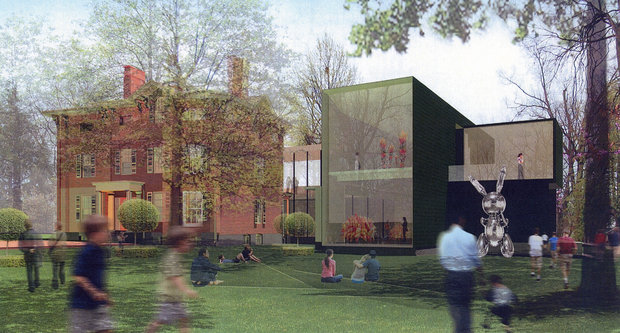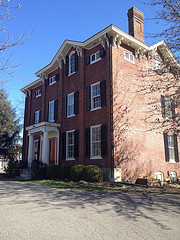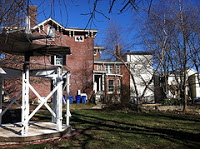The Martin Luther King neighborhood is the planned home for what is to be one of Lexington’s most contemporary pieces of architecture. On November 16, 2011 the
Living Arts and Science Center (LASC) began a campaign to raise nearly $5 million for the construction of an 11,000-square-foot addition that will more than double the size of its current structure, the historic George B. Kinkead House. Designed by Louisville’s award-winning
De Leon & Primmer Architecture Workshop, the project is not the first to change the antebellum building – though arguably it is the most drastic in scale and design.
Built in 1847, the Kinkead House was initially – and still recognizably – designed in the Greek Revival form. Dick DeCamp suggested that popular local architect Thomas Lewinski (responsible for the extensive Italianate alterations to
Latrobe’s Pope Villa) designed the mansion for Kinkead, as well as the Italianate changes incorporated sometime after 1853. George Kinkead, lawyer to Abraham Lincoln and family, was one of Lexington’s most forward-thinking citizens.
Kinkead was pro-Union and anti-slavery. His action spoke loudly on his beliefs: he provided 11 acres of land around his home to freed slaves. The area became known as Kinkeadtown and was almost exclusively African-American for nearly 100 years. Today, Kinkeadtown comprises the heart of the East End, though there is scant evidence other than the expansive mansion of the old community.
The Kinkead family owned the house for 134 years prior to donating it in 1981 to the LASC which had been leasing the property since 1970. The mission of the Living Arts and Science Center is to encourage “participation in art and science by engaging the community through discovery, exploration and creativity.” This mission should be advanced by the extensive addition that will include a planetarium, arts gallery, and recording studio, among others.
The Kinkead House is among Lexington’s most historically significant buildings. And not just for its architecture, but for its associated history and its current owner-occupany, the Living Arts and Science Center. With the new LASC addition, the architects have respected of the height and scale of the current structure, though Herald-Leader columnist Tom Eblen notes that it “is really a separate building, tucked along the south side and back of the Kinkead House.” Hopefully, the new addition provides a clear link between the building’s past and help progress the nonprofit’s mission as place of progressive and creative education.



